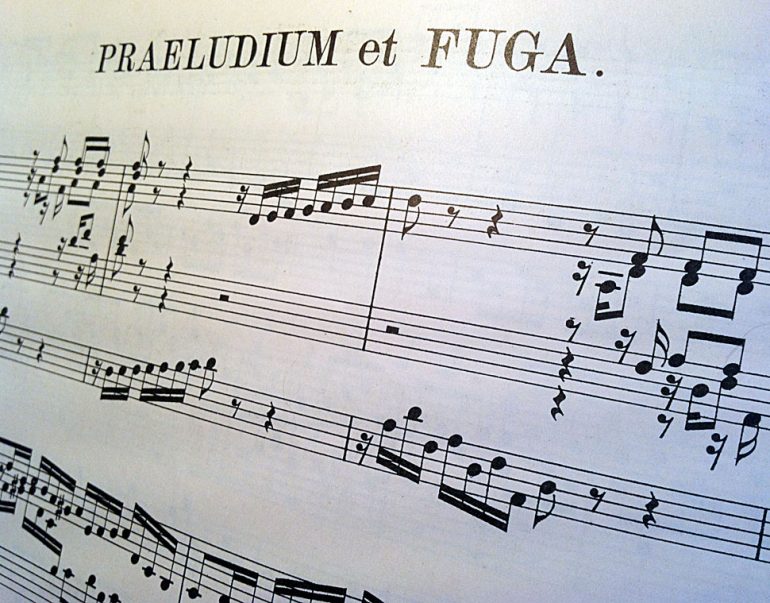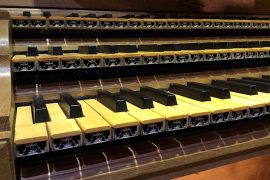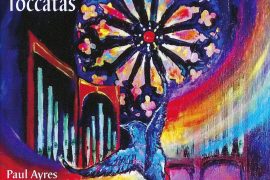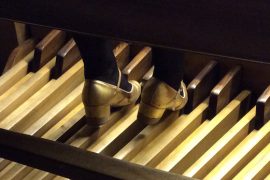The evolution of a musical form is, like biological evolution, seldom linear. But Philip Norman teased out a straight line of sorts, in his explanation of the development of the prelude/toccata/whatever + fugue format, on Saturday at Bloomsbury Central Baptist Church, as part of the Toccata & Fugue+ Day.
Start with the mid 16th century Italian toccata built of static chords alternating with scale passages, and improvisatory in nature. Composers like Claudio Merulo add a little bit of counterpoint here and there, though nothing you would call actual fugal development.
Move to the canzona by Frescobaldi – now we see clearly defined sections alternating the toccata structure with contrapuntal entries in imitation. A theme will be answered a fourth below – something approaching a fugue, but not quite.
Give this to Froberger, a globe-trotting pupil of Frescobaldi. German by birth, he travelled Europe from Rome to England, taking new ideas with him. His toccata might start with the similar held chords and scalic runs as the Italian toccata, but alternate with sections of fully worked-out counterpoint.
Buxtehude now takes over. In the North German style, a typical preludium might start with a passage of fairly mechanical keyboard figuration. The next section however is a properly worked fugue. Then comes another toccata section; then another fugue; then a dramatic chordal finale.
Give this finally to the young JS Bach. An early prelude BWV551 has picked up all the characteristics of the North German style – still a single piece, but with a proper fugue from bar 12 onwards. By BWV547 (great C major) we have our familiar bipart structure. In Bach’s own handwriting, a double bar line at the end of the prelude is now followed by a separate piece – clearly entitled Fuga.
Philip Norman runs organists online, a free service connecting organists, pianists, churches and choirs across the UK





